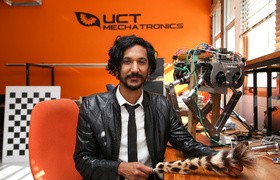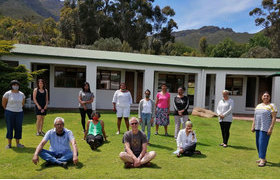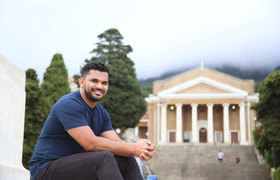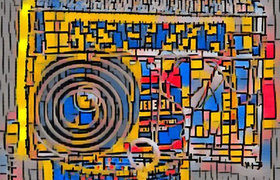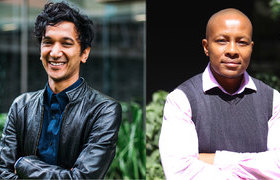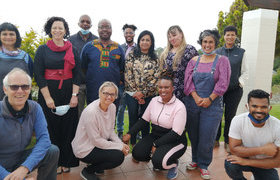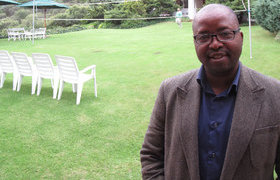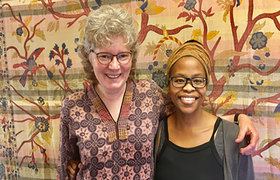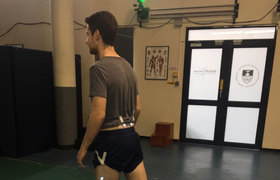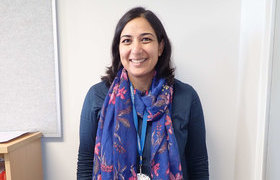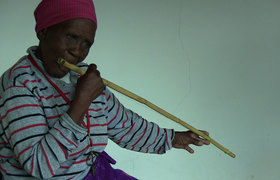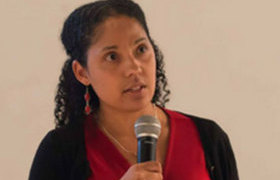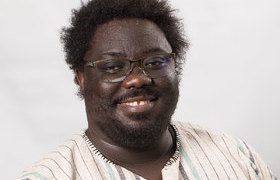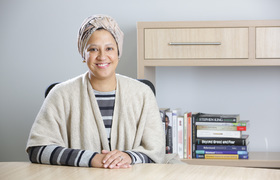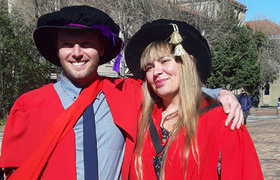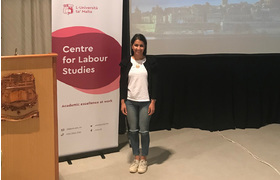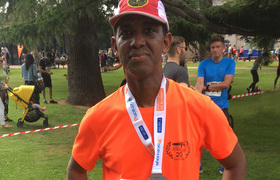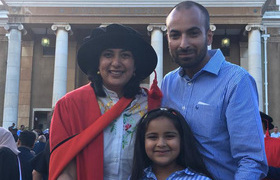Samuel Ginsberg: The power of collaboration
28 October 2016 | Story by Newsroom
UCT electrical engineer and senior lecturer Samuel Ginsberg has had a hand in inventing such diverse devices as a heat detector for informal settlements, an expandable surgical implant for children, a low-cost hearing aid and a wearable device that measures ambient CO2 levels.
What does he think is the secret to successful innovation?
“A lot of the things I have worked on have not been my ideas,” Ginsberg says, humbly. “I think that's maybe part of how these things happen though . . . You take a real world problem and you find a bunch of people with very different skill sets to try and find a solution. I think you also have to listen to what the end user of the device really needs.”
That was the case with the invention of the Lumkani fire detector, which grew out of an honours project by engineering student Francois Petousis, who was supervised by Ginsberg.
“The turning point for us came about a year and a half into the project,” remembers Ginsberg. “We sat down with a group of people who lived in a community that was prone to shack fires and we asked them what they needed a fire detecting device to do. By the end of an hour we knew we had to scrap everything we had done up to that point, but we also knew what needed to be done from that point on.”
with what you have.”
After some experimentation, the Lumkani team, which is made up of designers, engineers, economists and social scientists, collaborated to create the Lumkani fire detector. Over 7 000 fire detectors have been made so far and Lumkani is an official spin-off company. The device is also in the process of being patented – something that Ginsberg says he is in favour of since patenting can spur innovation.
“In the case of Lumkani, a portion of the small royalties paid to UCT will also go back into research budgets,” he says. “Patenting for the most part is very positive. It's only when it is motivated by corporate greed as a means to try and control markets that I think it becomes problematic.”
Necessity is the mother of invention
This is not a problem when it comes to the rest of the inventions that Ginsberg has helped to create, which have mostly come about in response to social problems or biomedical challenges. Take, for example, the case of the CO2 logger that Ginsberg worked on at the request of the Desmond Tutu Foundation.
“Robin Wood and Carl Morrow realised that CO2 exposure could be a risk factor for TB infection,” Ginsberg says. “So they asked that I create a device that measures ambient CO2 levels that was small enough to wear, not too heavy and that contained enough battery power to last through the course of a day.”
Ginsberg's device also contained a GPS tracker, allowing the movements of the subjects to be tracked, along with the capacity to measure temperature, humidity and CO2 levels. He is now working on refining his first version of the device to make it smaller while also allowing for users to enter details onto the device (such as the number of people in a particular environment) in real time.
Other devices that Ginsberg has worked on have included a low-cost hearing aid that can be calibrated remotely, which has been produced in collaboration with Dr Lebogang Ramma (Health Sciences). He has also created a surgical implant with Dr George Vicatos (Mechanical Engineering) that is intended for children who have suffered bone tumours or accidents. Thanks to a small motor, it is able to expand as the child grows.
Ginsberg, who is a fourth-generation engineer, explains that he grew up in an environment where his curiosity was always encouraged and where the greatest danger lay in some of the unexpected outcomes of his own engineering experiments.
“That's not the case for most kids growing up in this city though,” he says. “As an adult and as an engineer I know I am not going to find a cure for TB, for example, but trying to prevent fires or working on a device which is going to help someone to hear better are areas where I can possibly make a difference. I think it's a case of doing what you can with what you have.”
Story Ambre Nicolson. Photo Michael Hammond.
Watch the video:
Impact through Innovation: Samuel Ginsberg
 This work is licensed under a Creative Commons Attribution-NoDerivatives 4.0 International License.
This work is licensed under a Creative Commons Attribution-NoDerivatives 4.0 International License.
Please view the republishing articles page for more information.
Next Generation Professoriate (NGP)
The Next Generation Professoriate (NGP) is a mid-career academic staff development and support programme. Funded by the vice-chancellor’s Strategic Funds, the NGP addresses demographic inequalities in the academic hierarchy. The goal is to help members become associate and full professors.
The NGP was officially launched in September 2015. By the end of 2018, four of its members had been promoted to full professor and a further 14 had reached the rank of associate professor.
The programme is led by Dr Robert Morrell, who has over 35 years of academic experience in South African universities. He has a B1-rating from the the National Research Foundation (NRF) and is an elected member of the Academy of Sciences in South Africa.
Newsletters
In the news
